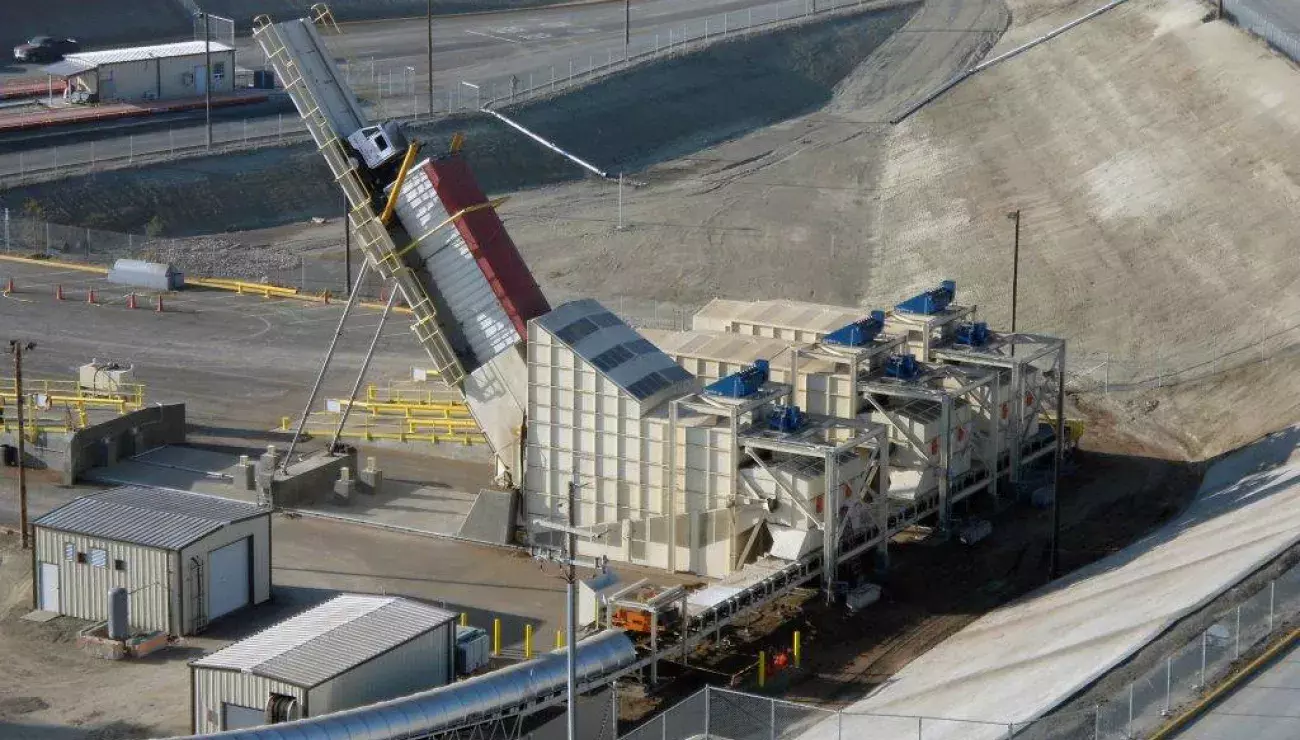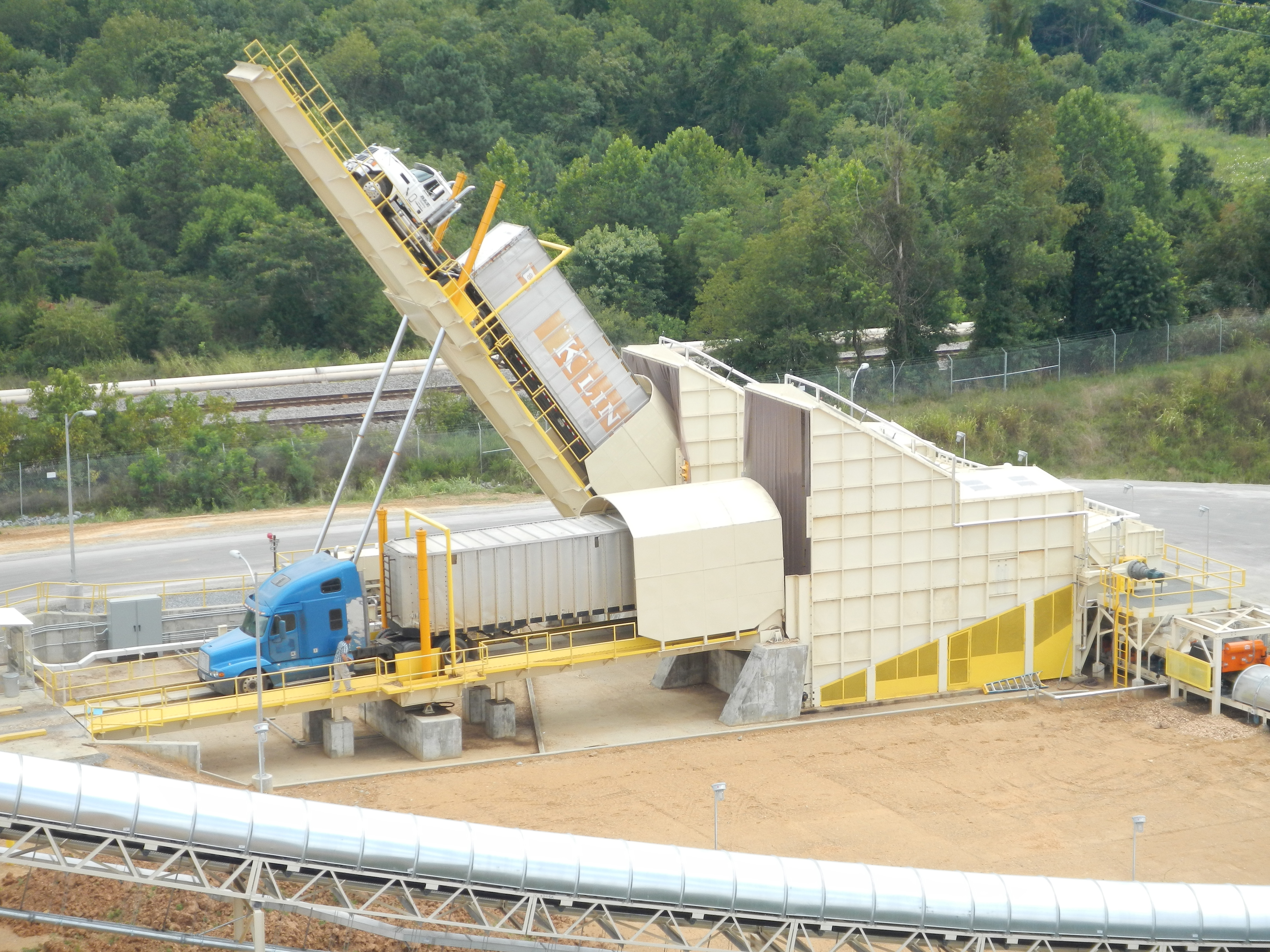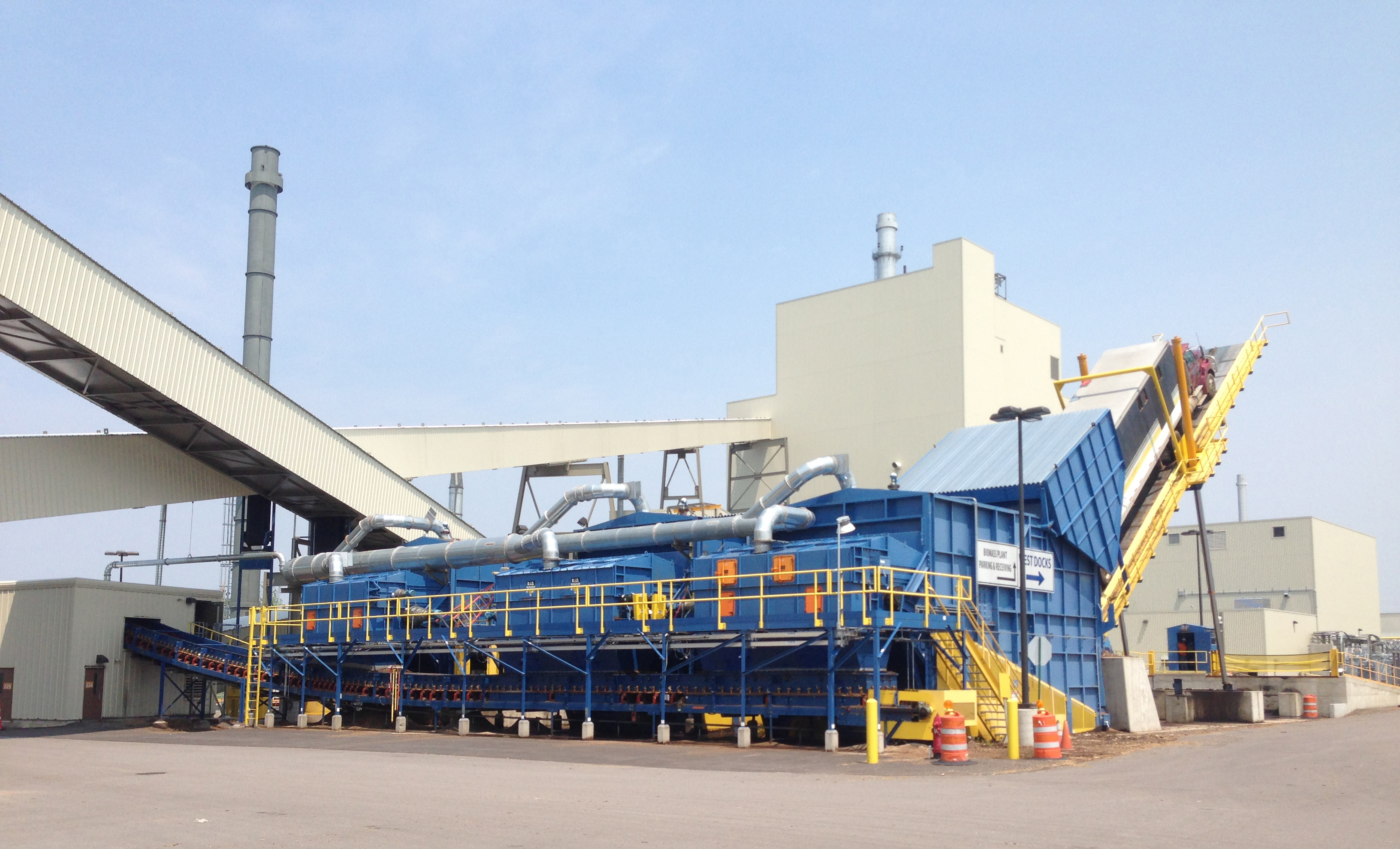
Ensure your machinery doesn't gather dust
15 Nov 2019High concentrations of dust from processed wood can cause problems if left unchecked. Aside from its environmental impact, sawdust can build up on the surface of machinery, especially on oiled parts, and interfere with equipment function; it can also potentially increase fire risk or the spread of fires in particularly hot and dry environments.
One of the fastest, most efficient ways to distribute and discharge the huge volumes of processed wood chips required by the bioenergy market and pulp and particle board industries is via bulk trucks. They are unloaded using truck dumper systems, essentially a platform and a set of hydraulic cylinders used to lift the entire truck and allow the free-flowing processed wood chips to dump out of the back of its trailer and into a receiving hopper.
Bruks Siwertell leads the market in both drive-on and back-on truck dumper versions and has developed many ways to mitigate the dust emissions that invariably occur from this form of material discharge.
Being a good neighbor
“The basic design of the truck dumper has been optimized to reduce dust emissions,” says Christopher Duffy, Area Sales Manager, Bruks Siwertell. “Primarily, dust is controlled by our low-profile end-pivot design, which ensures that the truck unloads its cargo at a low elevation, approximately 2.5m above the ground, and directly into the back end of the hopper. This keeps the impact of the material very low and results in minimal dust emissions, particularly when handling very dry materials such as wood shavings or wood pellets.”

In most cases, the low-profile design and the covered hopper is sufficient protection against dust emissions. However, in some cases, Bruks Siwertell is required to go the extra mile. Where facilities are located close to other industries or populated areas, the truck dumper can be covered with a fixed or rotating hood. Both versions mitigate dust emissions by bridging the gap between the truck dump end and the covered hopper. The fixed version is fitted onto the end of the hydraulic lifting platform. The rotating hood is fitted both to the platform and the hopper and articulates when the platform is raised and lowered.
“These additions to the system can provide assurances and help to develop good relationships with neighbors by settling any concerns about dust emissions from a new wood products facility being developed in the area,” notes Mr Duffy.

Particulate emissions guarantees
Where no dust emissions are permitted, a dust collector can also be specified. Dust collectors can be mounted directly over the covered hopper, or ducted to a central baghouse so that the customer can make better use of it.
“Bruks Siwertell has provided several truck receiving systems with particulate emissions guarantees,” he explains. “These have devices that ensure a negative pressure within the hopper so that dust is captured within the dust collector and does not escape from the hopper during operations. In most cases, the dust is reintroduced to the process automatically, or diverted away from the truck receiving area and used for fueling another process.”
Globally, there is a growing need to address environmental concerns about particulate emissions from wood-processing facilities. Bruks Siwertell is able to provide the equipment these trades require to operate safely, maximize their efficiency, and minimize the negative impact of dust.
For more information, please send an email to sales@bruks.com
Categories: Environment
 Bruks-Siwertell
Bruks-Siwertell